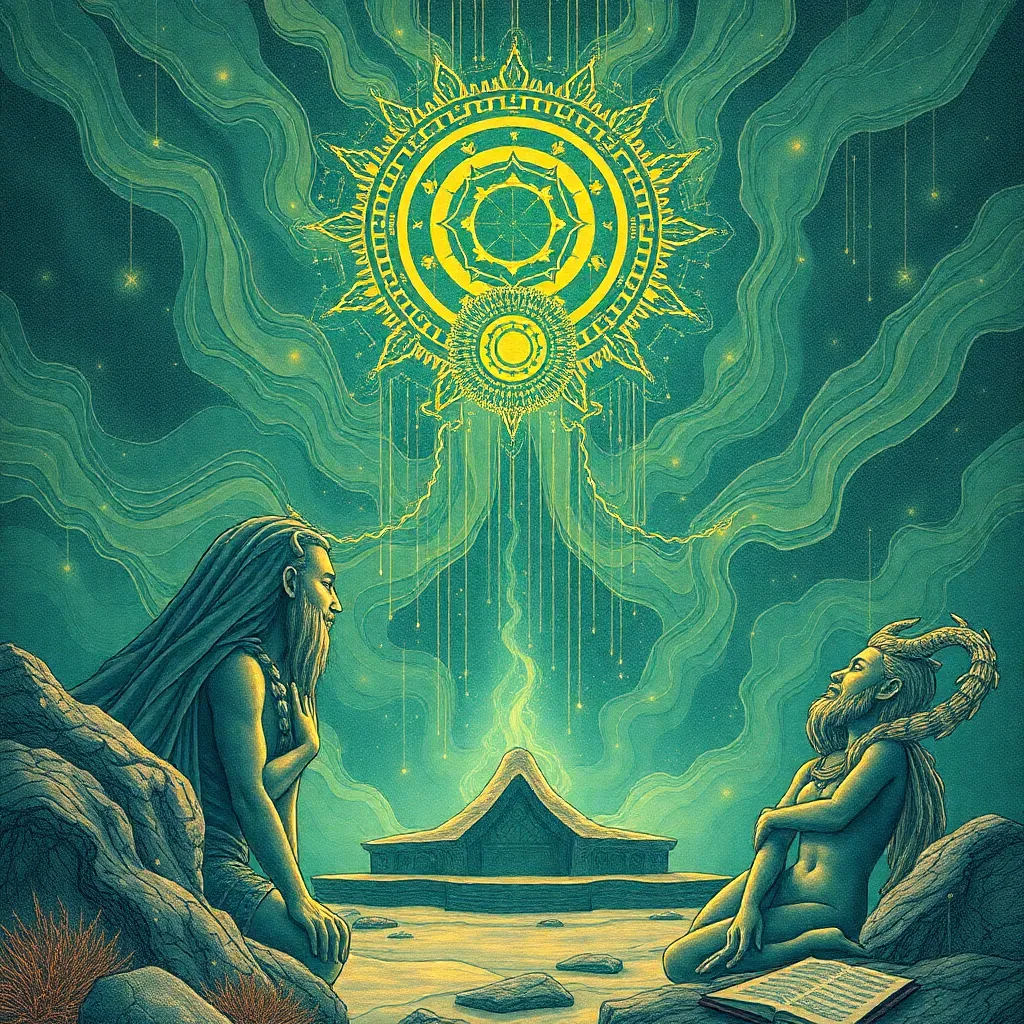The Baku and the Power of Healing: Exploring the Myth’s Connection to Mental and Emotional Wellbeing
I. Introduction
The Baku, a mystical creature from Japanese folklore, is renowned for its ability to devour nightmares and bring about healing. This myth has origins that date back centuries, with its significance transcending cultural boundaries. In a world where mental and emotional wellbeing is increasingly recognized as vital for a healthy life, the Baku provides a fascinating lens through which to explore our struggles with mental health.
In contemporary society, the importance of mental and emotional wellbeing cannot be overstated. With rising levels of anxiety, depression, and stress, individuals are seeking effective methods for healing and self-care. This article aims to delve into the symbolic connection between the Baku myth and the healing process, exploring its relevance in today’s world.
II. Understanding the Baku: Myth and Symbolism
A. Description of the Baku: physical characteristics and cultural significance
The Baku is often described as having the body of a bear, the trunk of an elephant, the legs of a tiger, and the eyes of a rhinoceros. This unique combination of features symbolizes strength and protection. Traditionally, the Baku is depicted as a benevolent creature, a protector that consumes harmful dreams and nightmares, allowing individuals to experience restful sleep and emotional clarity.
B. Historical context of the Baku in Japanese folklore
The origins of the Baku can be traced back to the Tang Dynasty in China, later making its way to Japan. In Japan, the Baku evolved into a symbol of protection and healing. It is commonly associated with the practice of placing Baku talismans in the bedroom to ward off bad dreams. This cultural significance emphasizes the creature’s role as a guardian of mental peace.
C. The Baku as a symbol of protection and healing in various cultures
While the Baku is primarily recognized in Japanese culture, similar creatures exist in other traditions. For example, in Chinese mythology, the Baku is known as the “Pangolin” and is also linked to dreams and protection. Across different cultures, these mythological beings serve as reminders of the power of imagination and belief in healing.
III. The Role of Myth in Mental Health
A. Overview of the psychological benefits of storytelling and mythology
Myths and stories have long been used as tools for understanding the human experience. They offer frameworks through which individuals can process emotions, confront fears, and find meaning in their lives. This narrative approach can significantly benefit mental health, providing solace and fostering resilience.
B. How myths like the Baku can serve as therapeutic tools
Myths such as the Baku can be integrated into therapeutic practices. By connecting with these stories, individuals may find a sense of empowerment and safety. The act of envisioning the Baku consuming one’s fears can be a powerful metaphor for overcoming anxiety and achieving emotional healing.
C. Connection between mythic imagery and emotional processing
Mythic imagery resonates deeply within our subconscious. Engaging with these symbols can help individuals articulate feelings they might struggle to express otherwise. The Baku, as a dream-eater, becomes a metaphor for confronting and processing negative emotions, enhancing psychological wellbeing.
IV. The Baku’s Influence on Emotional Healing Practices
A. Traditional healing practices involving the Baku in various cultures
In traditional Japanese culture, rituals involving the Baku include drawing its image on paper and placing it under a pillow to protect against nightmares. These practices highlight the cultural importance of the Baku in promoting emotional stability and restful sleep.
B. Modern interpretations of the Baku in therapy and wellness
Today, therapists are beginning to incorporate the Baku myth into their practices, using it as a metaphor for healing. Techniques such as guided imagery and visualization allow clients to connect with the Baku, fostering a sense of safety and inner strength.
C. Case studies and anecdotal evidence of healing through Baku-inspired practices
- One case study involved a young adult with severe anxiety who utilized Baku imagery in therapy. By visualizing the Baku consuming their fears, the individual reported reduced anxiety levels and improved sleep quality.
- A group therapy session focused on the Baku led participants to share personal stories of overcoming trauma, fostering a sense of community and collective healing.
V. The Science Behind Myth and Healing
A. Research on the impact of folklore and myth on mental health
Numerous studies have shown that engagement with folklore and myth can lead to improved mental health outcomes. The narratives allow individuals to contextualize their experiences, reducing feelings of isolation.
B. The placebo effect and its relation to belief in healing myths
The placebo effect highlights the power of belief in the healing process. When individuals believe in the efficacy of a myth like the Baku, it can lead to real psychological benefits, reinforcing the connection between belief and wellbeing.
C. Neuroscientific insights into the brain’s response to mythic imagery
Neuroscience research has indicated that engaging with mythic imagery can stimulate areas of the brain associated with emotion and memory. This suggests that the Baku, as a symbol of healing, can activate positive emotional responses and enhance cognitive processing.
VI. Integrating the Baku into Contemporary Mental Health Strategies
A. Practical applications of the Baku myth in mindfulness and meditation
Mindfulness practices can incorporate the Baku by encouraging individuals to visualize the creature during meditation sessions. This can help in releasing negative thoughts and fostering a sense of peace.
B. Creative arts therapies inspired by the Baku
Art therapy can also draw on the Baku myth. Participants can create artwork depicting the Baku, facilitating self-expression and emotional exploration. This creative process can be therapeutic and healing.
C. Community programs and workshops that incorporate Baku symbolism
Community workshops that focus on mythology and mental health can provide spaces for sharing and connection. Incorporating the Baku myth encourages participants to explore their own narratives while fostering a supportive environment.
VII. Personal Stories: Transformative Healing Through the Baku
A. Testimonials from individuals who found solace in the Baku myth
Many individuals have shared their stories of finding comfort in the Baku myth. One participant described how visualizing the Baku helped them overcome a particularly challenging period in their life.
B. Interviews with mental health professionals utilizing myth in therapy
Interviews with therapists reveal that integrating mythology like the Baku into their practices has yielded positive results for clients. These professionals emphasize the importance of narrative in healing.
C. The power of shared narratives and community healing
Shared narratives, such as those surrounding the Baku, foster connection and understanding. This communal aspect of storytelling can enhance the healing process, providing individuals with a sense of belonging.
VIII. Conclusion
In conclusion, the Baku serves as a powerful symbol of mental and emotional wellbeing. Its significance in folklore highlights the essential role of mythology in addressing contemporary mental health challenges. By exploring personal connections to myths like the Baku, individuals can engage in healing practices that resonate with their experiences.
As we embrace cultural narratives such as the Baku, we open ourselves to holistic approaches to mental health that honor our shared humanity. The call to action is clear: explore the transformative power of myth and integrate these rich narratives into our journeys toward healing.



